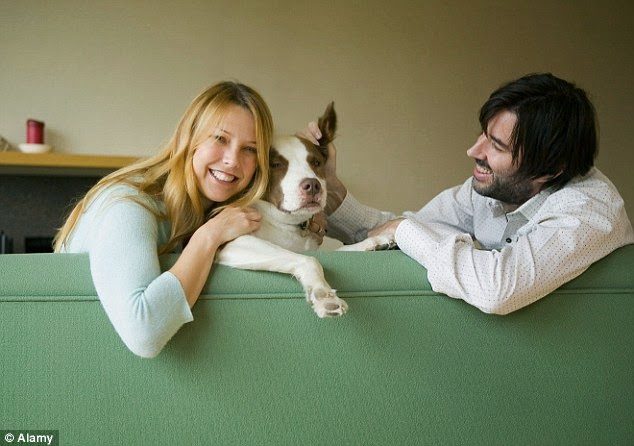
Love is one of the greatest gifts we can share with our dogs. Dogs are affectionate animals. Touch means a lot to them, both in their natural world and when they live with us. However, affection that hasn’t been earned and is shared at the wrong time can be detrimental to a dog.
Children (and adults too) often want to show love to dogs the way we show love to each other, through hugs and kisses. Dogs do not naturally understand this, or even enjoy it. Hugs and face-to-face contact can be very threatening to dogs. The dog may tolerate this for a while, but at some point may bite or snap to protect himself once he has exhausted all his means of more subtle warning. Some dogs do enjoy a hug from a special person, if it is on their terms and done with some extra scratching on the chest. Few, if any dogs enjoy hugs the way young children do this, which is to clasp around the neck and hang on. Parents, teach your children to avoid face-to-face contact with any dog (even their own dog) and to show love to the dog in ways other than hugging and kissing.
Steps!
Give your dog plenty of exercise. When your dog needs to go out, take him or her out. You will know he needs to, because he will give you pleading looks, stand by the door, bark, etc. There may be whining, scraping and barking accompanying the need for exercise outdoors as well.
Pet him. If he puts his head in your lap, don’t scratch behind his ears! Well, you can, but when dogs do that, they’re actually trying to figure out where you’ve been, who you’ve been with, and what you just ate! Dogs just want to be loved. They love neck and tummy scratches and a dog massage is one of the best ways to show your affection for your dog.
Try (if possible) avoid hugging your dog. Most dogs, especially large dogs, hate this because dogs want to feel dominant. If you are holding him back, he doesn’t feel like he’s in charge.
Reward your dog. Many dogs, Goldens and Shelties in particular, exist to please their owners, and they will do it. You have to reward them. Give them treats that are healthy and made specially for dogs. You don’t have to buy the treats, you can make excellent ones yourself at home.
Talk to your dog. Dogs love it when you talk to them. You will develop your own language together and share intimate moments. And no dog will ever tell you to stop going on about a bad day at the office!
Spend quality time with your dog. Your dog loves attention. Set aside time every day to spend just with your dog. Even if it’s just lying in front of the TV together, stroking your dog’s ears and resting together.
Prioritize yourself to your dog. Set regular and consistent times to feed your dog and take him or her for walks. Your dog will love you for it because it’s doing him or her a world of good for their well-being. Doing things for your dog at the same time every day will let it know what to expect at that time.
Cherish your dog. Always respect your dog and the love that your dog has brought into the house. Be kind, caring and considerate in the way that you treat your dog. Your dog is a family member.
Give your dog a comfortable place of its own. Your dog’s sleeping area should be its alone, not to be shared with piles of washing or storage boxes. Make sure it is out of the way of people who walk through and other annoyances.
Discipline your dog. Just like a child, if you don’t discipline your dog, that means you don’t love him or her too much. Whenever your dog does something wrong, discipline him/her! You can do this by being consistent and sticking with the rules.

Give affection – but at the right time!
Remember anytime you give affection, you reinforce the behavior preceding it. Reward stability. Share your love when your dog is in a calm-submissive state.
Share affection after a dog has…
exercised and eaten, changed an unwanted behavior into a behavior you asked for, responded to a rule or command, or entered a calm-submissive state.
Don’t share affection when your dog is…
fearful, anxious, possessive, dominant, aggressive, whining, begging, barking, or breaking a household rule.
And don’t forget exercise and discipline.
Prove your love by giving your dog what he or she needs: long walks; rules, boundaries, and limitations
Understand Your Dog
- Learn to read dog body language so that you can understand what your dog is trying to tell you.
- A happy dog pants and wags his tail loosely. He may wag all over.
- An anxious dog might show a half moon of white in his eye or he may lick his lips or yawn. He may turn his head away or walk away. He wants to be left alone.
- A dog that suddenly goes stiff and still is very dangerous and might be ready to bite.
- A dog with his mouth closed and ears forward and/or with his tail held high is busy thinking about something and does not want to be bothered.
Building a solid foundation of respect and trust with your dog leads the way to your being able to do virtually anything with him. Once you have established a trusting bond so that your dog understands you will protect him from harm, he will come to at least tolerate essential physical activities, and at best, enjoy them.


